With recent isolation requirements it has been an ideal time while going on one’s daily walk to notice some of the visitors to the local wetlands and coastal headlands.
Margaret Lacy photographed an elegant specimen of a female Darter or Snake Bird (Anhinga) having a preening rest with a Great Cormorant at the Allen Noble Sanctuary.
 Great Cormorant and Female Darter
Great Cormorant and Female Darter
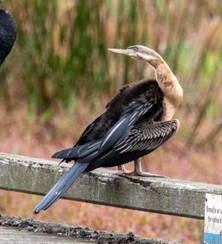 Darter
Darter
They are called the Snake Bird because when they swim, their head and long sinewy neck are held above the water line moving backward and forward like a snake (see photo below of one after it has harpooned a Hyrtl’s Catfish, with its sharp beak, and returned to the surface before swallowing it whole (photo from Yellow Water, Kakadu).
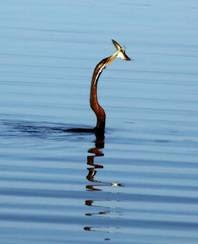 Darter with fish
Darter with fish
Ellinor Campbell, while out on Point Roadknight, observed the Hooded Plovers breaking all the rules, gathering in groups of up to 8 and 12 including three of this year’s youngsters.
 Hooded Plovers
Hooded Plovers
They were often seen sheltering behind the headland when the winds came from the north and north east.

Also out on the point could be seen a single Double-banded Plover, Charadrius bicinctus, over from New Zealand to winter here. It sheltered behind a clump of sea-weed staying out of the wind.
 Double-banded Plover
Double-banded Plover
Two Red-necked Stints, Calidris ruficollis, have been seen on the point, while back at the Anglesea River mouth Red-kneed Dotterels, Erythrogonys cinctus, could be seen bobbing on the river bank.
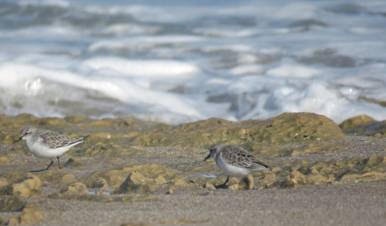 Red-necked Stints
Red-necked Stints
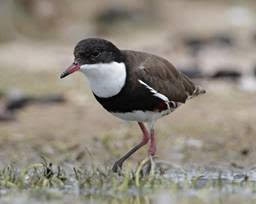 Red-kneed Dotterels
Red-kneed Dotterels
The Black-fronted Dotterels, Charadrius melanops, could also be seen scurrying along the shallow grassy verges in Coogarah Park.
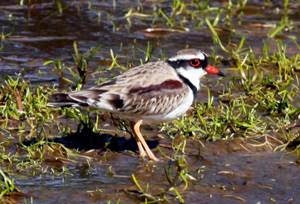 Black-fronted Dotterel
Black-fronted Dotterel
It is hard not to stalk the stalking White-faced Heron, Egretta (Ardea) novaehollandiae, a regular to Point Roadknight.
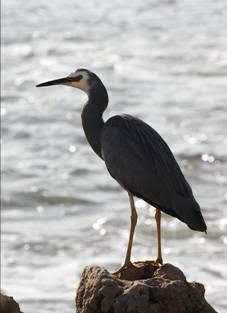
This time it was back in on the rocks looking for sand crabs and other sheltering critters, its white face was a beacon in the crystal autumn morning light.
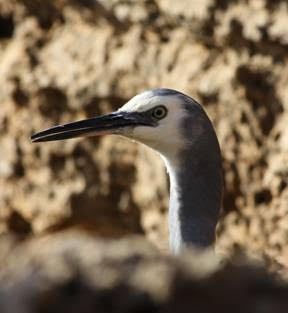 White-faced Heron
White-faced Heron
On a recent walk Peter Forster noticed that the Black Ducks, Anas superciliosa, and Chestnut Teals, Anas castanea, were back at Coogarah Park in numbers.
 Pacific Black Ducks
Pacific Black Ducks
The male Chestnut Teals were displaying, so with any luck they will stay until breeding time in late winter/spring.
 Chestnut Teals
Chestnut Teals
Pete noticed them making a strange alarm call more like seagulls (odd for ducks), then noticed that a Grey Goshawk, often seen at Coogoorah Park, had alighted on a nearby tree.
John Lenagan